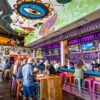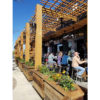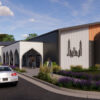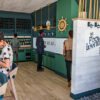inPLACE Design’s founder Dustin Watson joined David Campbell, CEO of Boxman Studios, leading a workshop at ICSC’s Centerbuild 2018 Conference in Phoenix. The workshop, titled “Overrated or Game Changer? Why We Love Shipping Container Retail (and You Should Too!)”, focused on the use of shipping containers in retail environments. In this interactive workshop a wide range of topics related to shipping container structures and placemaking were discussed.
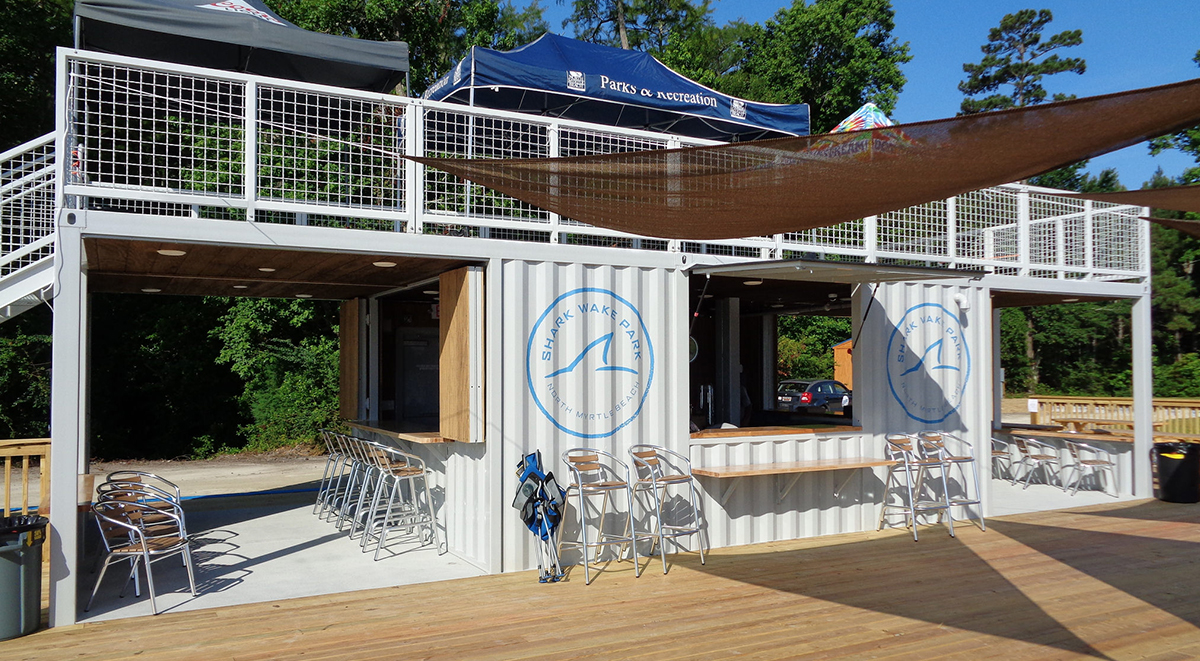
Shipping containers have been used as habitable space for over 30 years. Since then they have been used as houses, offices, hospitals, hotels, schools, stadiums, art studios, and even swimming pools, and now restaurants, and retail. Using shipping containers in retail environments has really come into its own with projects around the world.
One of the first topics discussed was the benefits of using shipping containers. The biggest benefit is the speed at which you can get a project to market from inception to opening day. An example that was presented, Common Ground in Seoul Korea, has 57,000 sf feet of leasable area and was built in only 5 months. Using over 200 containers, the project is one of the world’s largest container mall complexes built on an underutilized urban parking lot. Containers can be temporary or permanent. Baltimore’s Sand Lot was offered as a project that is temporary. It will be in use until a planned large-scale development is built on the site. The project is also only open during the warmer months of the year. The mobility of shipping containers allows them to be used temporarily, and shifted to another site for re-use, and then substituted with more permanent structures. Availability is also a key advantage. In the US we import more containers with goods made overseas than we export. An often-touted benefit is their sustainability. Re-purposing saves the energy that would be required to melt down the steel for other uses.
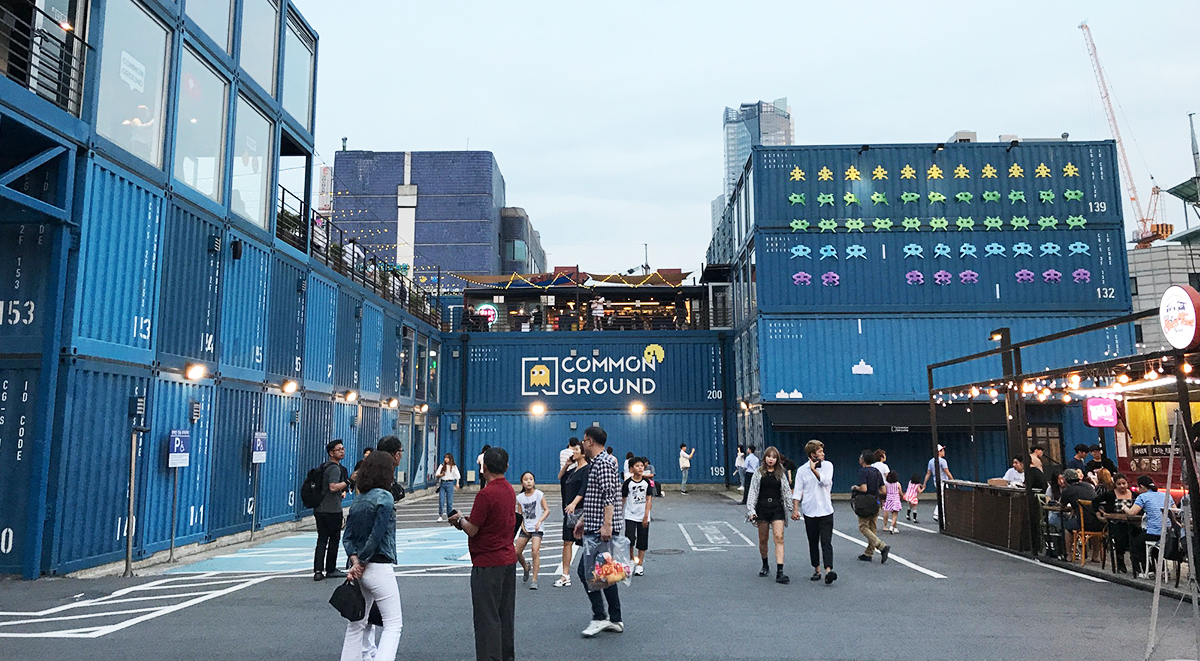
“…shipping containers offer a quick and flexible solution to many retail opportunities.”
The workshop participants also discussed the role of placemaking and container retail. With shopping centers facing many challenges in recent years they are looking to offer unique environments and experiences to remain competitive. By creating a more engaging retail experience, a shopping center can drive more traffic, increase sales, and guarantee that customers leave with memories. A collection of containers can create a placemaking experience for an underperforming retail center providing the center an opportunity to build new experiences. Placemaking is about making a physical space that empowers people to create a spiritual, emotional, and psychological connection. This keeps customers shopping longer, without realizing it and fosters a community and sense of belonging. All this feed the bottom line where the developer sees increased foot traffic and rising revenue.
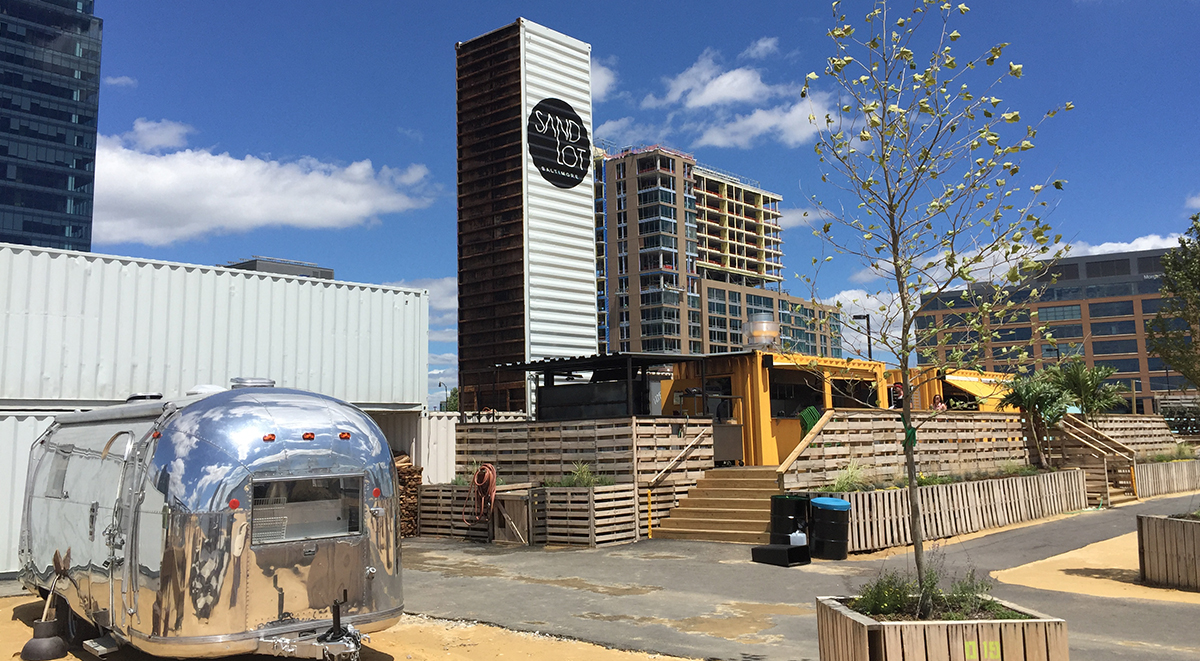
Through a series of live polls, we found that 87% of the audience believed that container projects could be a viable solution to a stressed retail property or help a retail property to remain relevant. We also found that 92% of the audience has underutilized space in their shopping centers that could be a placemaking opportunity.
At the end of the workshop, the audience was asked to come up with one word that best describes container retail. Some of the words that were offered included Trendy, Undefined, Catchy modern, Efficient, Experience, Temporary, Popup, Possibilities, Unique, Edgy, and Marketing. The top words were trendy, unique, and temporary as illustrated in the workshop’s word cloud below.
Many more questions than could be answered in the hour-long session demonstrates the staying power that this trend seems to have. The workshop determined that shipping containers offer a quick and flexible solution to many retail opportunities.

Check out inPLACE Design’s shipping container project, Popbox.
Dustin Watson the founder of inPLACE Design is an architect and expert on placemaking and has written numerous articles on placemaking, sustainability, retail redevelopment in mixed-use projects, and shipping container retail.
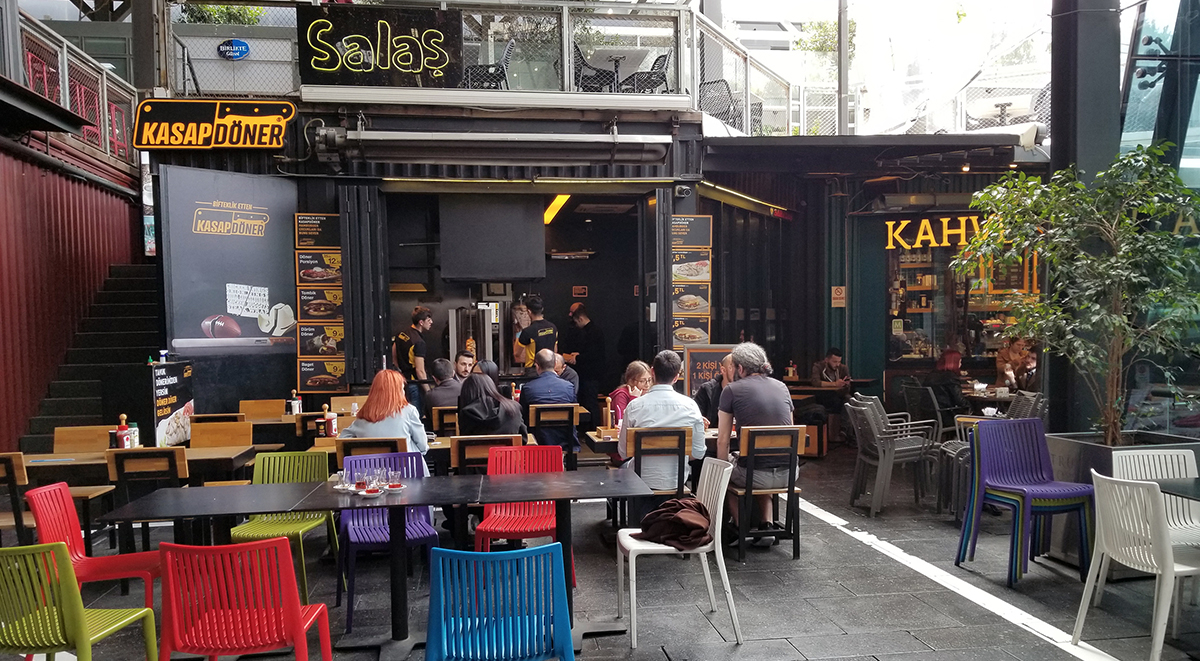
inPLACE Design is an architecture, planning, and design firm with the experience and capabilities to create extraordinary, engaging, and inspiring placemaking in cities, towns and suburbs both nationally and internationally. We are dedicated to design excellence and innovative design strategies that are environmentally responsible and sustainable.



